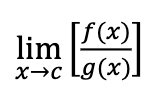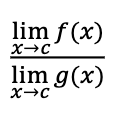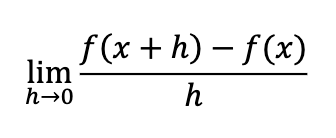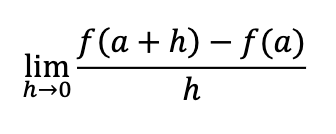AP Calculus AB/BC TTKs
1/33
There's no tags or description
Looks like no tags are added yet.
Name | Mastery | Learn | Test | Matching | Spaced |
|---|
No study sessions yet.
34 Terms
continuity criteria at x = c
both one-sided limits must exist and be equal at x = c
f(c) must equal the limit as x approaches c
removable discontinuity (hole)
limit exists at x = c, not equal to f(c)
jump discontinuity
both one sided limits exist, not equal
infinite discontinuity
at least one of the one-sided limits approaches infinity as x approaches c
VERTICAL ASYMPTOTE
limit of a constant
constant

limit of a constant times a function
move constant to outside limit


limit of two added/subtracted functions
separate limits and add


limit of two multiplied functions
separate limits and multiply


limit of two divided functions
separate limits and divide

limit = constant/0
limit approaches infinity
limit = constant/approaching infinity
limit approaches 0
limit as x approaches ±∞ = c
y = c is a HORIZONTAL ASYMPTOTE (function can have max of 2)

1

1

0

0
If f(x) is continuous on [a,b]…
f takes on every value between f(a) and f(b) INTERMEDIATE VALUE THEOREM

limit definition of a derivative at any point

limit definition of a derivative at x = a

another limit definition of a derivative at x = a
normal line
perpendicular to tangent line
differentiability implies…
continuity
horizontal tangents
numerator of derivative = 0
vertical tangents
denominator of derivative = 0
first derivative test
changes signs + to - at x = c → relative max
changes signs - to + at x = c → relative min
x = c is a critical point where f’ is either 0 or undefined
a function is increasing when…
f’ > 0
a function is decreasing when…
f’ < 0
f” > 0
f’ is increasing and f is concave up
f” < 0
f’ is decreasing and f is concave down
point of inflection at x = c
f” changes sign at x = c
2nd derivative test for relative MINIMUM
f’(c) = 0 and f”(c) > 0
2nd derivative test for relative MAXIMUM
f’(c) = 0 and f”(c) < 0
Product Rule
Used to find the derivative of the product of two functions. If u and v are functions, then the derivative is given by: (uv)' = u'v + uv'
Quotient Rule
low d high - high d low all over low squared